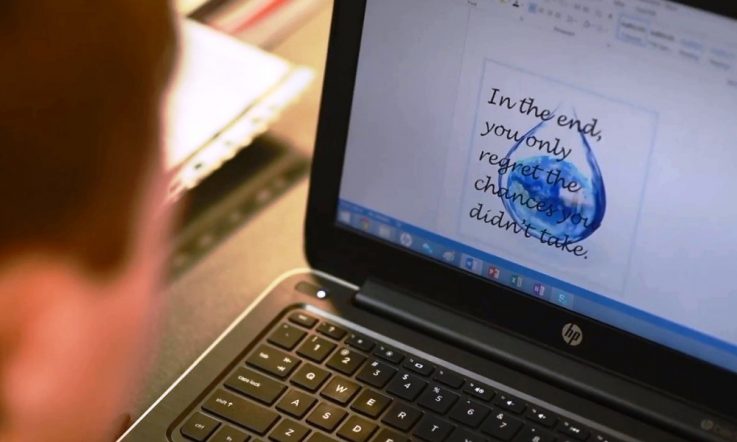In part two of our Q&A with educator Renata Grudic, we find out about the tools and strategies being used to help teachers at Sydney's Northern Beaches Secondary College (NBSC) build their resilience and wellbeing.
The College Head Teacher, Teaching and Learning, also shares details of a collaborative partnership with a local university.
Can you take us through the first phase of the teacher wellbeing investigation at NBSC and the collaboration with Macquarie University?
Based on scientific research and evidence, we provided a rationale behind our teacher wellbeing investigation (Roffey (2012); Hattie (2009); Spilt, Koomen & Thijs (2011); Jackson & Waldman (2011)). We mapped out intended outcomes, how we intended to achieve them and prepared a timeframe.
In Phase 1 (Term 4, 2015) NBSC established a collaborative partnership with Macquarie University's Faculty of Human Sciences. Psychology students, in their last semester, are required to engage in approximately 35 hours of work in the community. That's referred to as the PACE (Professional and Community Engagement) Program. The college submitted an ‘activity statement' and six psychology students chose our investigation to participate in. They attended an induction, which included an introduction to positive psychology and the Appreciative Inquiry process [a positive change management approach exploring what's working well], especially the interview technique. The teacher wellbeing investigation was two-fold.
Part 1 was an annotated literature search focusing on three areas: teacher wellbeing, teacher and student interactions, and psychometric measures of wellbeing. Research findings were required to be scientifically-based and aligned with positive psychology. That was a bit of a challenge for the uni students as they had to get their head around positive psych as well. The research findings are informing what we're currently doing.
Part 2 involved the university students conducting appreciative interviews at each campus. During the interview, teachers were asked to reflect and describe their peak performance, their wellbeing at its best, and memorable encounters with students. The interviews were one hour and it was quite interesting because teachers weren't expecting that particular style of questioning – they thought they were going to [talk about] ‘this is what's wrong with the place'. So, it took a few of them by surprise, us asking ‘what went well this week?' or ‘tell me about the best professional experience you've had'. So it was very different and it was refreshing to see how many teachers volunteered to participate. We gathered rich stories about what contributes to teachers' wellbeing and what's working well for our teachers across the College.
Phase 1 was completed at the end of 2015 and Phase 2, this year, includes staff measuring their own resilience. What tools and strategies are you using and how will they inform interventions?
Phase 2 involves the implementation of a psychometric wellbeing measure. The measure identified as the most appropriate for our College is The Resilience Report. This is a web online tool that contains three measures. After answering a series of questions, teachers are able to get a snapshot of their resilience at that particular point in time. As we know, resilience is a process - it's not something where ‘I'm resilient today so I shall always be resilient'. We might be resilient today but something happens in our life, something changes, we face an adversity, and we may not be resilient in a week's time. In times of adversity, we hope to be able to draw on experiences and resources that we have to be able to pull through the adversity and be more resilient at the other side.
So, each staff member is able to measure their own resilience using The Resilience Report. We have requested everyone completes the [online report] at least once – this will provide baseline data and trends, and will inform the development of positive psych interventions and strategies that will be developed. Teachers have access to their report for six years and can measure their own resilience as often as they want. Every so often we'll request teachers log in to gather updated data and trends, which will provide opportunity to measure any changes after strategies and interventions have been implemented.
Delivery of the Resilience Doughnut (Adult version) [this is a model for building resilience] is one strategy that will be implemented to enhance teacher wellbeing. To achieve this, seven teachers completed training in the Resilience Doughnut (Adult version). In Term 3 this team will analyse the trend data and make recommendations on future strategies. We've got a few other strategies that we're looking to roll out, but we're just waiting on that baseline data to confirm if what we're thinking is right.
Did you always have a particular timeline mapped out?
Originally resilience and wellbeing was mapped with some ‘fluidity' – based on data and feedback over three years. As of 2015, the college's commitment to embedding positive psychology and approaches is clearly articulated in the NBSC School Plan 2015 – 2017 as a key program, ‘Program 1: Positive Education – Resilience and Wellbeing'.
So, will this continue to be a focus for NBSC?
It'll definitely be a focus for this year and 2017. We're collecting baseline data on wellbeing, commencing creation of resources, and providing further professional learning opportunities. Recently we offered a course on solution-focused approaches to staff who were not with us last year. This course will be offered annually as part of the NBSC induction program. We'd like to have a common language and approaches when it comes to communicating. Difficult conversations can create stress at times. Using solution-focused language in conversations with a student or another teacher, or with a parent … even in your own family – if you can acknowledge the issue, move the conversation forward fairly quickly and identify preferred futures and options, then potential stress and anxiety that people experience will be reduced.
You mentioned before that you've been able to tap into volunteer resources. You also received grant funding to support the work.
NBSC applied for a Systems Leadership Grant through the New South Wales Department of Education. We were very fortunate to receive the grant, which is currently being used to assist our investigation, create positive psychology strategies and interventions to enhance teacher's wellbeing.
We scoped and sequenced the teacher wellbeing investigation from Term 4 2015 to end of 2017, and we made some modifications for Macquarie University's participation. We've been very fortunate receiving the grant – it's enabled us to shorten the timeframe. But, sometimes people make the error of thinking ‘if we get the funds we'll commence the project or investigation, and if we don't, we won't do it'. You're better off planning without huge amounts of money.
I'm excited that this semester we have another group of PACE students [from Macquarie University] coming to NBSC. This year's PACE students will be investigating ‘Enhancing organisational effectiveness and employee wellbeing'. The intended outcomes include investigating organisational processes that impact on employee wellbeing (both negative and positive) with empirical evidence; examining interventions and strategies that maximise organisational processes and employee wellbeing; and recommendations aligned to positive psychology interventions and strategies which are supported by empirical evidence.
One activity we use at the beginning of meetings is ‘What Went Well this week?' or ‘What's Working Well?' – WWW. This activity elicits positive emotions, opens creative thinking and broadens thinking. People have responded really well and they're actually excited to start a meeting that way.
References
Hattie, J. (2009). Visible learning: A synthesis of 800+ meta-analyses on achievement. Abingdon: Routledge.
Jackson, P. & Waldman, J.(2011) Positively speaking: The art of constructive conversations with a solutions focus. St Albans: Solutions Books
Roffey, S. (2012). Pupil wellbeing – teacher wellbeing: Two sides of the same coin? Educational and Child Psychology, 29(4), 8.
Spilt, J. L., Koomen, H. M., & Thijs, J. T. (2011). Teacher wellbeing: The importance of teacher-student relationships. Educational Psychology Review, 23(4), 457-477.
One activity NBSC uses at the beginning of staff meetings is ‘What Went Well this week?’ or ‘What’s Working Well?’ – how often do you discuss the positives in your workplace?
The college is working with a local university. What opportunities are there for your school to develop collaborative external partnerships to support staff and student needs?
Renata Grudic was one of the presenters at this year's Excellence in Professional Practice Conference (EPPC). To read more articles on EPPC visit the Teacher archive.



